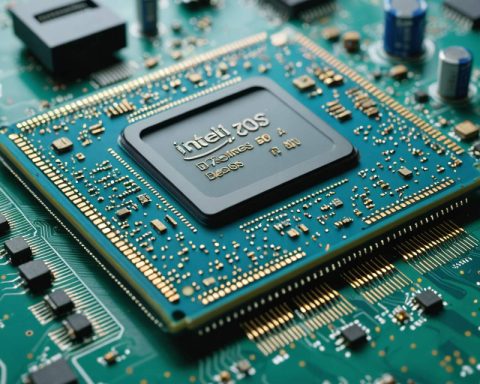The Electric Vehicle Battery Swap Revolution: How This $1.1 Billion Market Is Charging Toward a $7.9 Billion Future
Swappable EV batteries are set to transform electric mobility, slashing charging times and powering a market boom by 2033.
- $1.1 Billion: Global market value in 2024
- $7.9 Billion: Projected market size by 2033
- 24.3% CAGR: Annual growth rate from 2025 to 2033
- 2-3 Minutes: Time to complete a battery swap
Forget the days of waiting hours for electric vehicle (EV) batteries to charge. The global swappable EV battery market is on the verge of a major breakthrough, expected to grow more than sevenfold between 2024 and 2033. Industry titans, startups, and city planners are racing to build infrastructure that could put an end to “range anxiety” and reshape urban mobility around the world.
Battery swapping—the ability to trade a depleted battery for a fully charged one in under five minutes—is rapidly gaining momentum. Urban delivery fleets, rideshare drivers, and scooter users are reaping benefits as cities across Asia, Europe, and North America roll out pilot stations at record speed.
This trend is turbocharged by government incentives for clean transportation, mushrooming investments in battery-as-a-service (BaaS) platforms, and advances in modular battery design. As standardization accelerates, drivers can expect greater compatibility and seamless swaps wherever they go. Explore global trends in e-mobility and battery innovations at Bloomberg and CNBC.
Why Is Battery Swapping the Game-Changer for EVs?
Battery swapping tackles two EV headaches head-on: long charging times and limited range. Instead of plugging in for hours, drivers pull up, pop out the spent battery, slide in a fresh one, and hit the road.
- Speed: Swaps take less than five minutes—faster than refueling gasoline vehicles.
- Convenience: Urban and commercial fleets save time, boosting operational efficiency for last-mile delivery and shared mobility.
- Infrastructure: Reduces pressure on charging points and power grids, making EV adoption easier even in areas with underdeveloped infrastructure.
- Affordability: Battery-as-a-service (BaaS) models let drivers subscribe or pay per swap, slashing upfront vehicle costs.
Who Are the Key Players and Markets to Watch?
A dynamic mix of tech giants and startups is shaping the future of swappable EV batteries. In Asia, NIO Inc., Gogoro, CATL, and Sun Mobility lead rapid deployments. In the US, Ample Inc. is rolling out innovative swapping stations, while Battery Smart and Ola Electric Mobility are igniting India’s urban mobility revolution. Automakers like Honda and KYMCO aim to define standards and speed up adoption.
Key growth regions include China, India, Japan, Germany, and the US—each boasting considerable investments and government backing. Cities like Shanghai and Bengaluru are already testing massive swap network rollouts.
Learn more about global automotive trends at Reuters and sustainable tech progress at Forbes.
Q: What Are the Main Challenges Facing Battery Swapping?
- Standardization: Diverse vehicle types and battery designs make compatibility tough, but ongoing industry collaborations are closing the gap.
- Upfront Infrastructure Costs: Installing station networks requires heavy investment, but scaling and public-private partnerships are driving costs down.
- Consumer Awareness: Education and incentives are key to boosting adoption beyond commercial fleets into the mass market.
How Can Investors and Businesses Capitalize in 2025?
Savvy stakeholders are eyeing three main opportunities:
- BaaS Platforms: Subscription-based models offer recurring revenue streams and win over cost-conscious fleets.
- Urban Mobility Partnerships: Collaborating with municipalities, delivery services, and rideshare companies accelerates pilot projects and adoption.
- Tech Innovation: Investments in interoperability, AI-powered swap logistics, and advanced battery chemistries will define the next market leaders.
How Do You Get Started With Swappable EV Batteries?
1. Evaluate Fleet Needs: Analyze whether battery swapping fits your business model—especially if you manage commercial fleets or city logistics.
2. Partner with Established Providers: Approach companies like NIO, Gogoro, Ample, or Battery Smart for pilot programs and integration support.
3. Stay Ahead on Tech: Watch for emerging standards and new battery types to ensure long-term compatibility and compliance.
4. Leverage Incentives: Tap into government grants, rebates, and energy partnerships to defray infrastructure costs.
For cutting-edge energy and tech updates, visit Tesla and Green Car Reports.
Ready to charge into the future? Start planning your move in the booming Swappable EV Battery Market now!
- Bookmark top market research resources and monitor industry announcements
- Contact major swap station operators to explore partnership opportunities
- Identify target cities or regions ready for pilot deployments
- Allocate budget for BaaS investment and infrastructure
- Stay updated with global EV policies and incentives for 2025 and beyond












